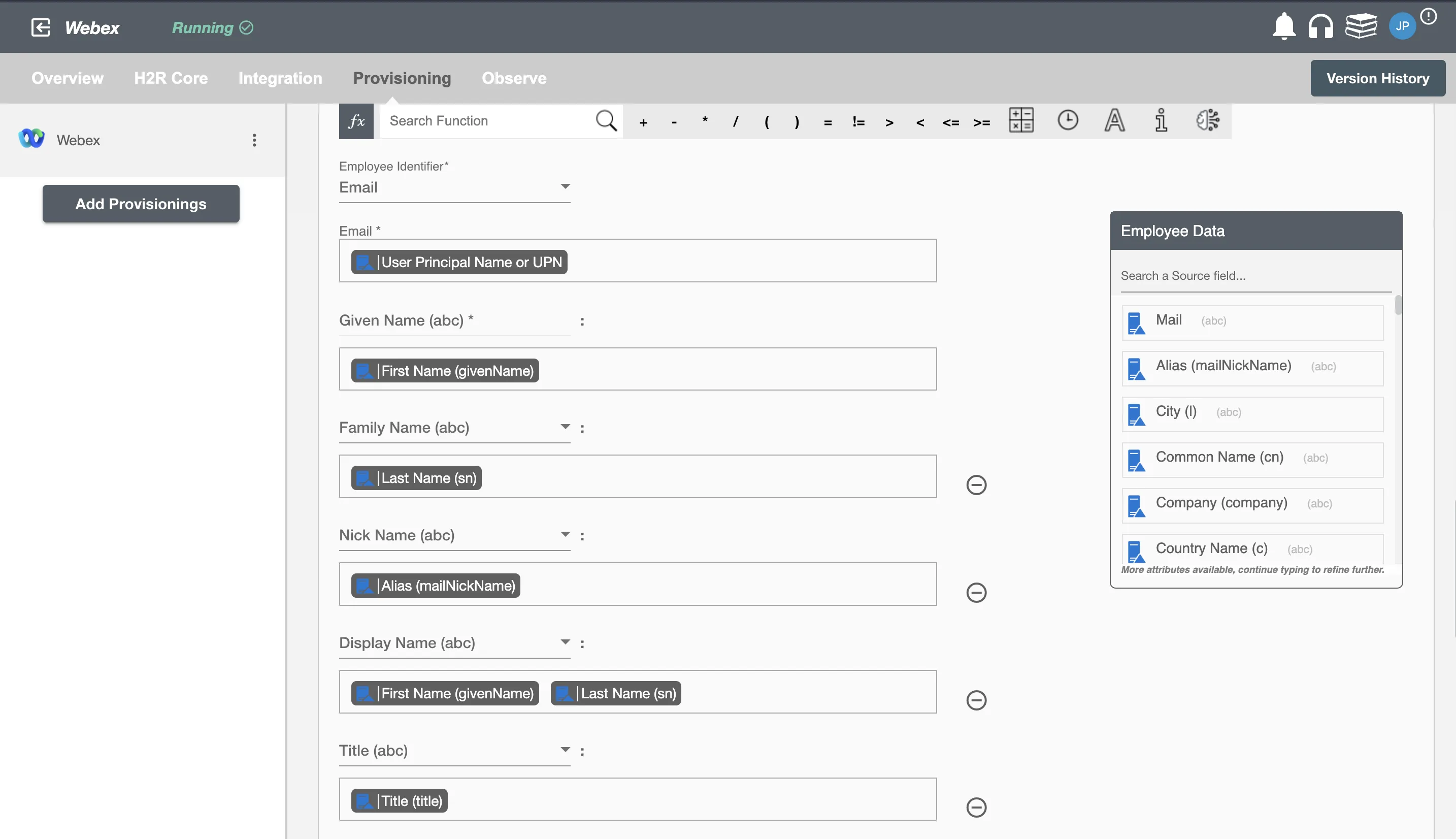Overview
Using the Provisioning on Hire2Retire you can provision and deprovision users on Webex.
Read the official documentation of Webex.
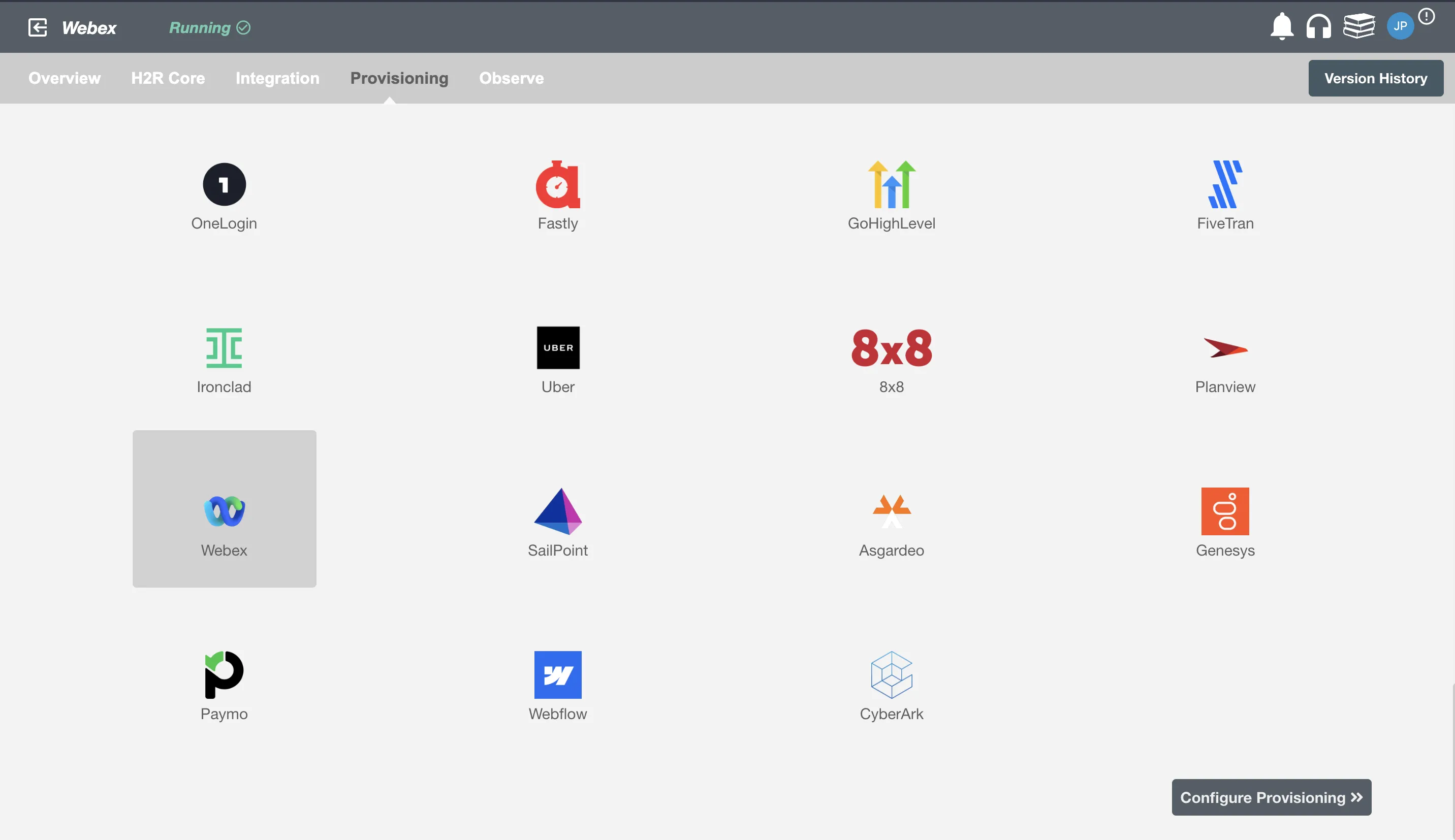
Define Role Definition¶
Provisioning Type¶
Define Role(s)¶
You can assign a Role to any user based on their AD attributes. You can define complex conditions using AND and OR logic. You can also use thee Group memberships in AD to define Roles. The Roles are used to assign specific privileges and licenses in Webex. For Example: In Figure 2, the rules are defined on the basis of Title (Equals) and Department (Equals). If the rules are passed then only user(s) will get provisioned. If no rule passes and the user(s) is present in Webex then deprovisioning is performed for the user(s).
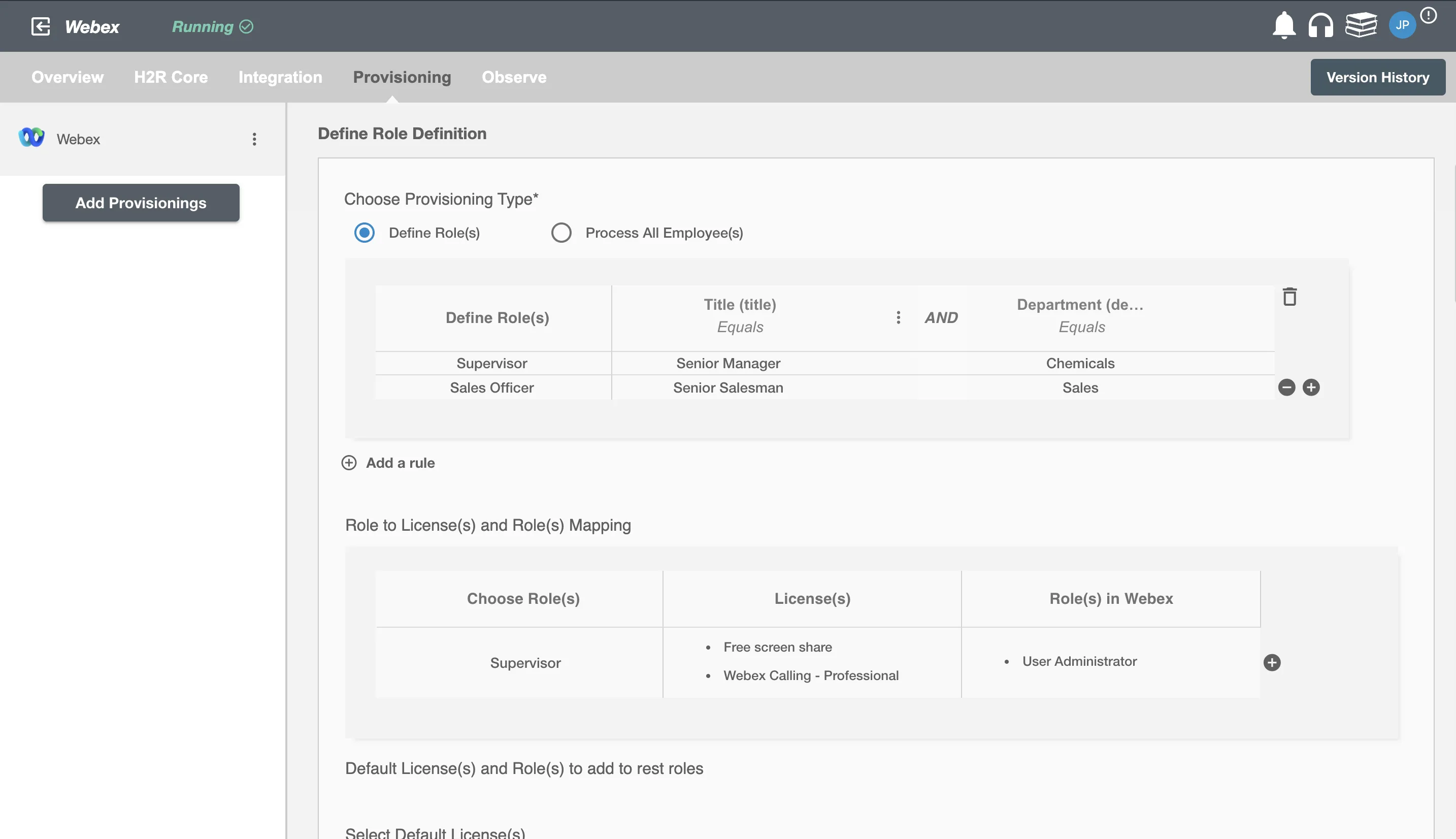
Map the rules defined in the first table with the License(s) and Role(s) provided by Webex.
-
Roles in Webex are a way to group together users who have similar responsibilities. An specific role provides some specific privileges within the Webex.
-
License is an allowance for features and services that are provided to users on a Webex services subscription. License can be assigned only by admins.
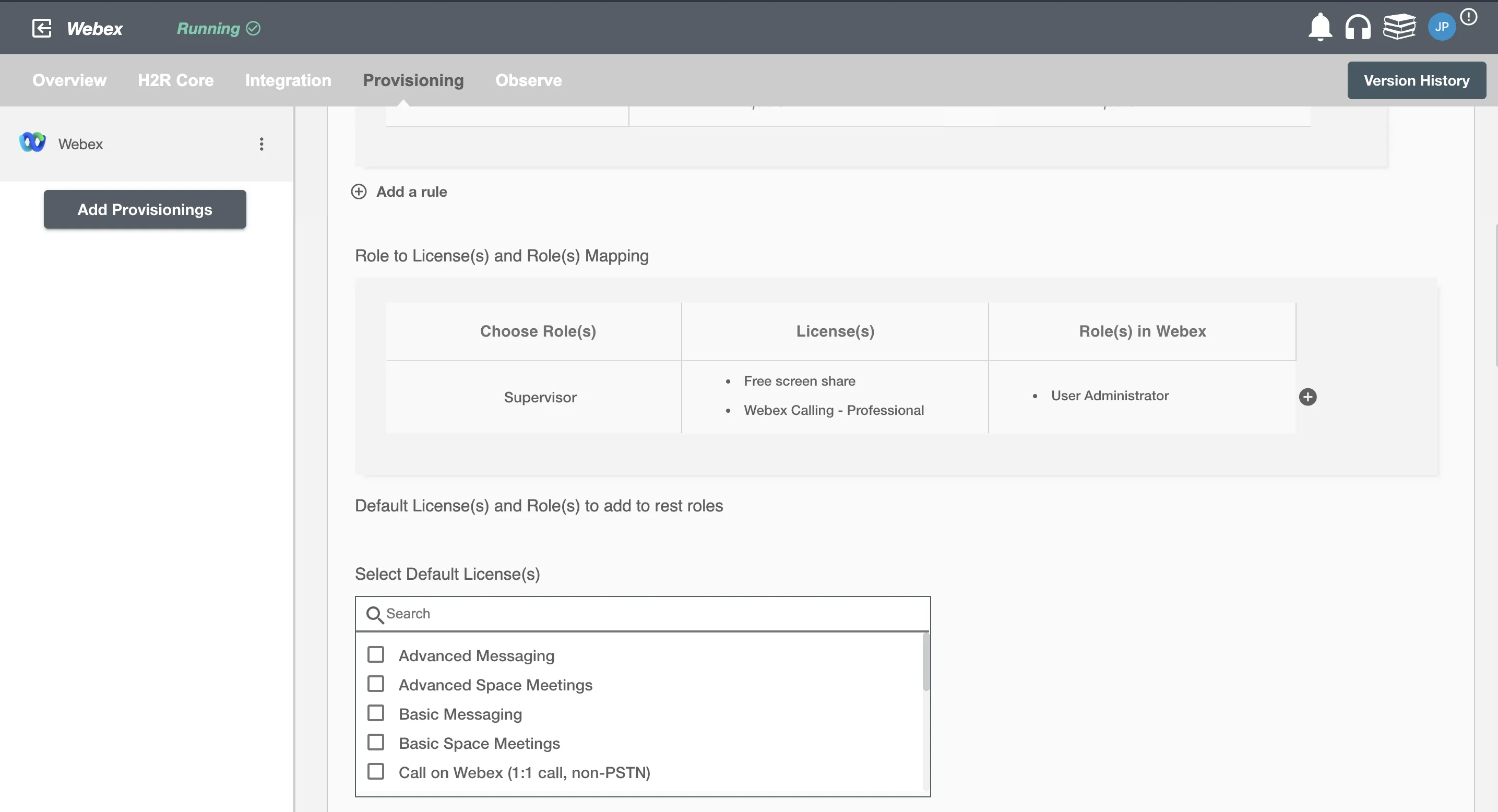
You can also select the default roles in Webex. For if and only if 'Sales Officer' Role is passed and it is not mapped in the second table then the selected default License(s) and Role(s) in Webex will be assigned to the user(s).
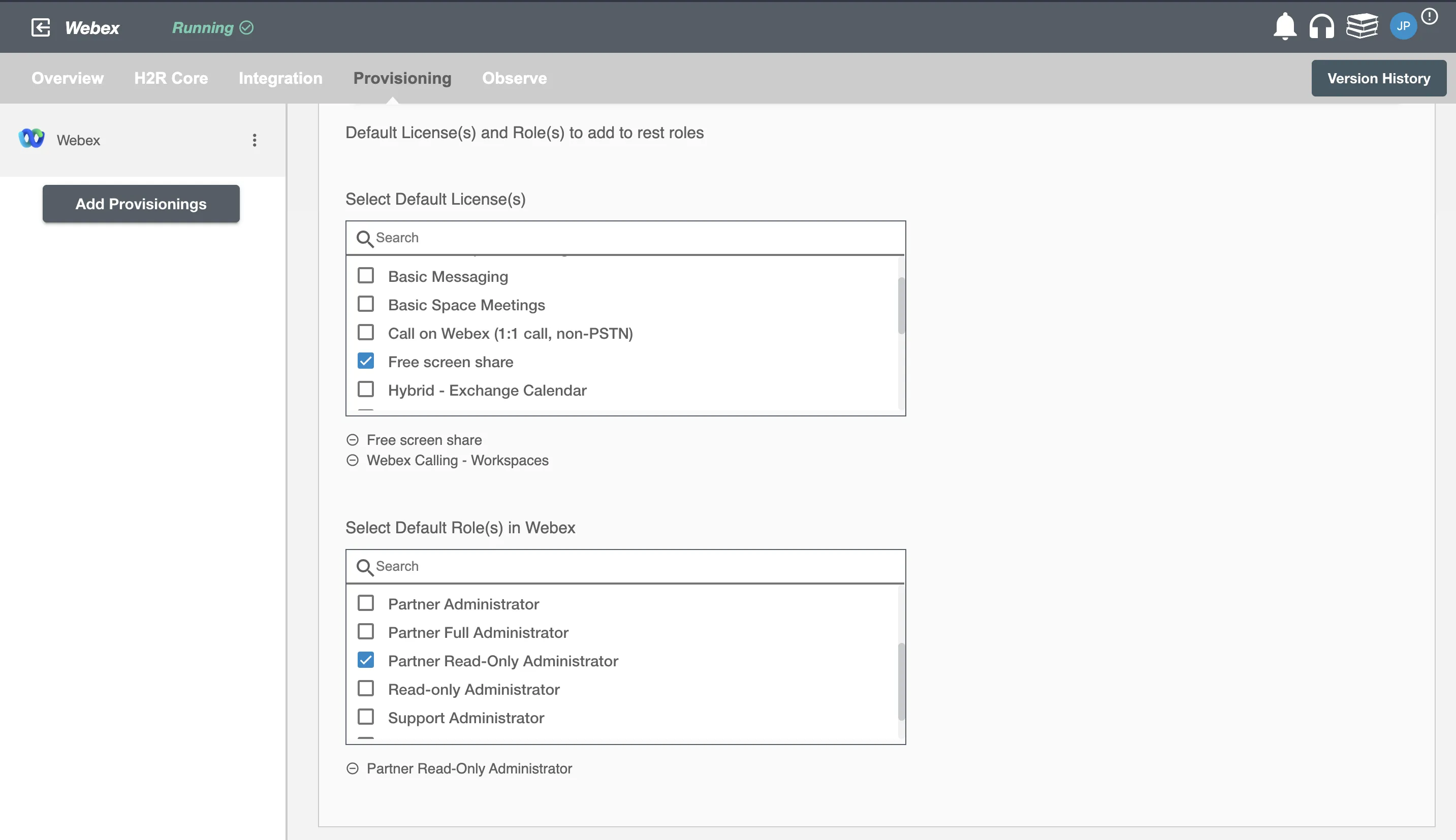
Process All Employees¶
All user(s) will be provisioned on Webex.

Provision User¶
You can decide to either provision or deprovision using Provisioning.
You can provision one or more user(s) according to the requirement. User(s) can be created, updated or reactivated in provisioning operation. You can deprovision one or more user(s) according to the requirement. User(s) can be terminated in deprovisioning operation.

Map attributes on Webex¶
You can select the attributes provided by Webex that you want to populate. You can map values from AD/Entra ID/Hybrid to populate these attributes. You can also use Hire2Retire's powerful data transformation capabilities using Excel Style functions.
